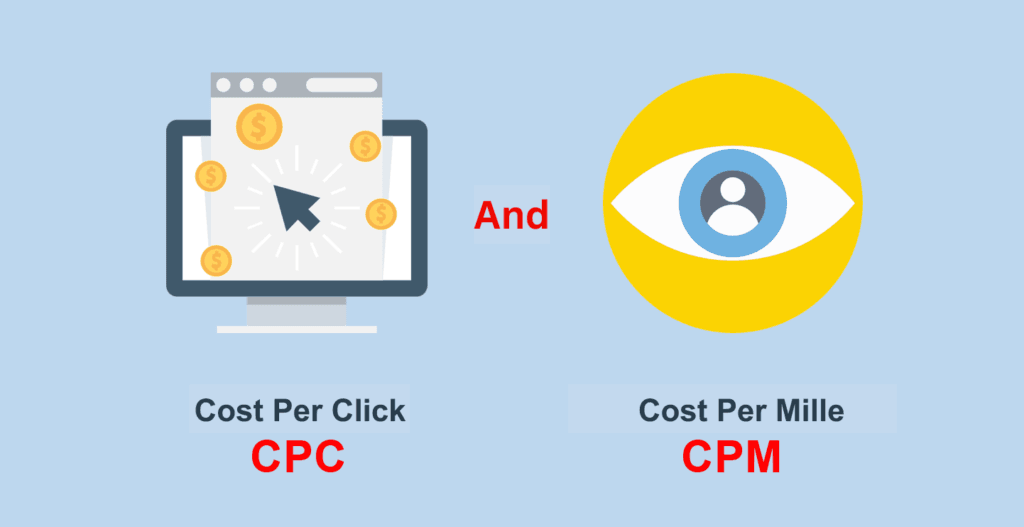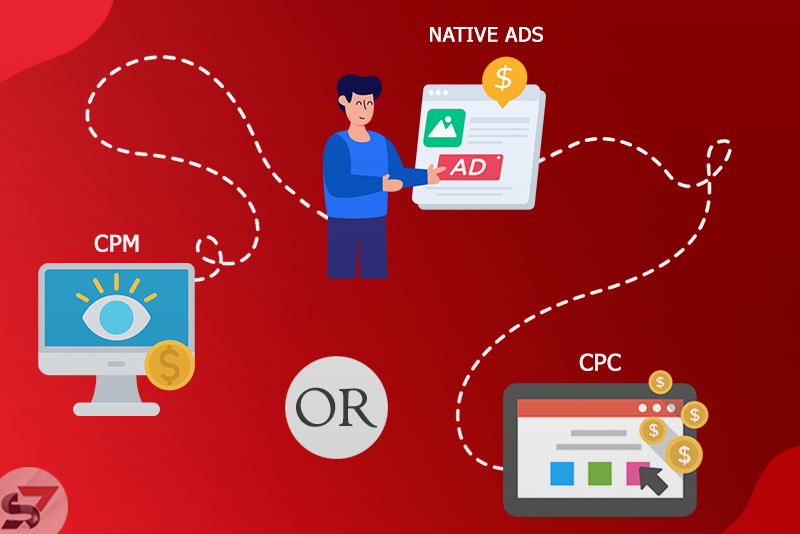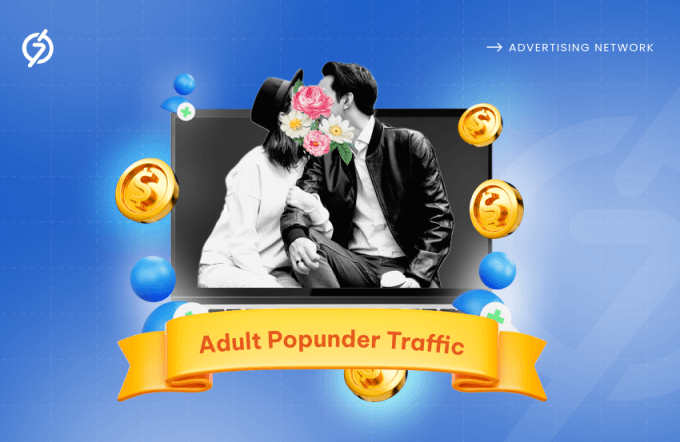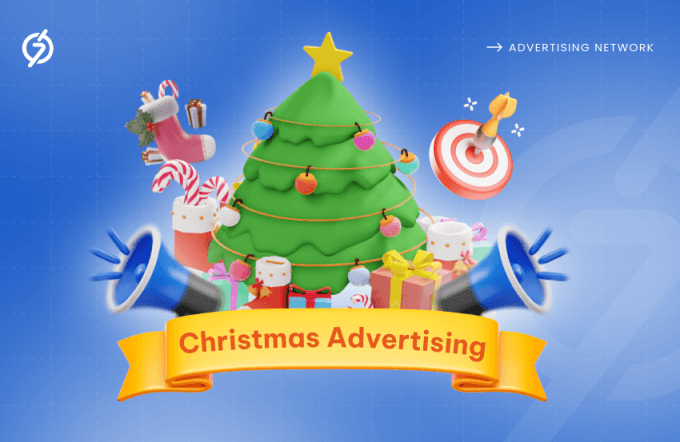Introduction
Businesses have a vast range of alternatives when it comes to advertising tactics, each with its considerations and benefits. Native advertising has emerged as a highly efficacious method for seamlessly blending promotional content into the browsing experience of users.
Native ads blend with the website content or surrounding editorial, enabling a non-intrusive and more natural user experience. However, choosing the best pricing structure for native ads can be difficult. The CPC (cost per click) and CPM (cost per thousand impressions) are two common pricing models utilized in native advertising.
In the further section, we will compare them. To dive into the depth of the topic, continue reading.
What is CPC?
Cost per click (CPC) is a pricing model used in online advertising. It’s a method of charging advertisers based on the number of clicks their ads get. In a CPC model, advertisers pay a specific cost for each click a user makes on their ad.
CPC is generally used in search engine advertising platforms such as 7SearchPPC and Google AdWords. It is also used in social media advertising campaigns on platforms like Instagram and Facebook. Advertisers bid on particular keywords or target demographics, and the price they pay per click is determined via an auction system.
The PPC model enables advertisers to have better control over their amount. It also ensures that they are only paying for measurable outcomes. CPC also offers valuable data for advertisers to evaluate the efficacy of their ads. They may measure the conversion rate, CTR, and ROI to evaluate the success of their campaigns. They may also make essential adjustments to optimize their results.
It can be a helpful pricing model for advertisers seeking to drive targeted traffic and measure the immediate effects of their ad campaigns.
What is CPM?
Cost per thousand impressions (CPM) is a pricing model generally used in online advertising. It represents the price an advertiser pays for every one thousand impressions of their advertisement. An impression is counted every time an ad is displayed on a site or within an application, regardless of whether the user engages with the ad or not.
In this model, advertisers consent to pay a fixed amount for every thousand ad impressions delivered. The cost per thousand impressions is decided through an auction system or predefined rates set by the advertising platform. For instance, if the agreed CPM rate is $7, the advertiser will pay $7 for every one thousand times their ad is displayed.
Difference Between CPC And CPM
CPC concentrated on charging advertisers for each click on their ads. On the other hand, CPM charges advertisers based on the number of impressions their ads get. CPM is helpful for reaching a wider audience and increasing brand exposure.
CPM is more pertinent when the motive is to drive traffic and encourage user engagement. The choice between CPM and CPC depends on the platform, advertising goals, and particular campaign goals.

Formula to calculate CPC
Here is the formula to calculate CPC, such as-
CPC= Total Price / Total Clicks
In this formula-
- The total cost refers to the maximum amount of money spent on the advertising campaign.
- Total clicks refer to the maximum number of clicks generated by the advertising campaign.
You would require to determine the maximum price incurred and the total number of clicks.
Formula to calculate CPM
Here is the formula to calculate CPM, such as-
CPM= (Total Price / Total Impressions)*1000
In this formula-
- Total price refers to the total amount of budget spent on the advertising campaign.
- Total impressions refer to the total amount of times the ad was displayed or viewed by the audience.
To calculate the CPM, you would determine the total price incurred and the total amounts of impressions generated.
Which Is the Best CPM Or CPC For Native Ads?
The ideal pricing model for native ads depends on your campaign budget, objectives, and target market. It is advised to test both CPC and CPM options and evaluate the performance metrics to determine which bidding model aligns better with your motives and offers the desired ROI.
What Is The Best CPC And CPM For Beginners?
For beginners, the cost per click (CPC) is generally a more user-friendly pricing model than the cost per mile (CPM).
Here’s the reason-
Clear Cost Control- CPC gives you more control over your spending since you only pay when someone clicks on your advertisement. This enables you to establish a precise spending limit and guarantee that you only pay for genuine clicks.
Direct Performance Measurement- CPC offers a more direct measurement of user engagement as you pay for clicks. This enables you to track CTR and conversion rates more accurately, which may assist you in understanding the effectiveness of your ad campaigns.
Conversion-Focused- If your primary motive as a beginner is to generate leads, drive traffic, or get particular conversion actions, CPC fits well with those goals. It focuses on generating actual clicks and can aid in campaign optimization for higher conversion rates.
Lower Risk- With CPC, you pay for clicks rather than just impressions, which means your spending is more efficient. For newcomers who are still researching and testing the preferences and behaviors of their target audience, this may be less risky.
While CPC can be more beginner-friendly, it’s essential to consider your target campaign goals, target audience, industry, and available budget. CPM may still be a good option if your motive is brand awareness or reaching a broader audience. CPC usually offers direct measurement, more control, and conversion-focused outcomes. This is why it’s a perfect choice for beginners.
Final Takeaway
I hope you have learned many essential facts about CPC and CPM. As mentioned, choosing these bidding models for native ads entirely depends on your particular campaign goals and priorities. Both are beneficial in their ways. You may choose 7SearchPPC as your final destination if you seek an ideal platform for promoting your business through CPM or CPC. Along with these, there you may get various ad alternatives, including Native Ads.
















![Sports Advertising Campaign Ideas: [2026 Events + Ad Strategies Explained] 7 Sports Advertising](https://www.7searchppc.com/blog/wp-content/uploads/2025/11/Sports-Advertising-680x442.png)

